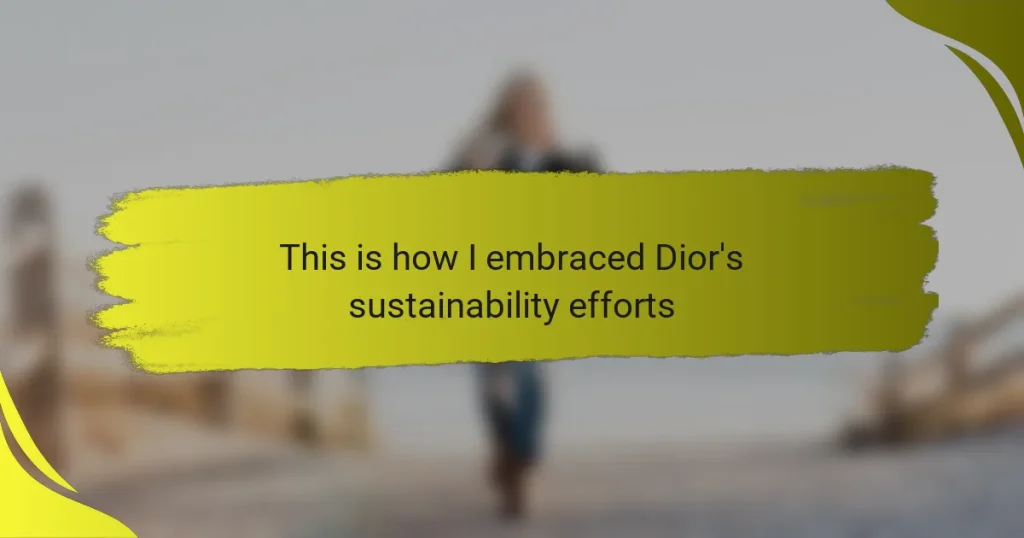Key takeaways
- Dior is committed to sustainability through responsible sourcing, innovative materials, and transparency in reporting progress.
- The brand utilizes eco-friendly materials like organic cotton and regenerated nylon, demonstrating that luxury and sustainability can coexist.
- Celebrities supporting Dior amplify the brand’s sustainability message, making eco-friendly fashion more aspirational.
- Consumers can embrace sustainability by choosing responsibly sourced items, maintaining garments, and sharing their insights with others.
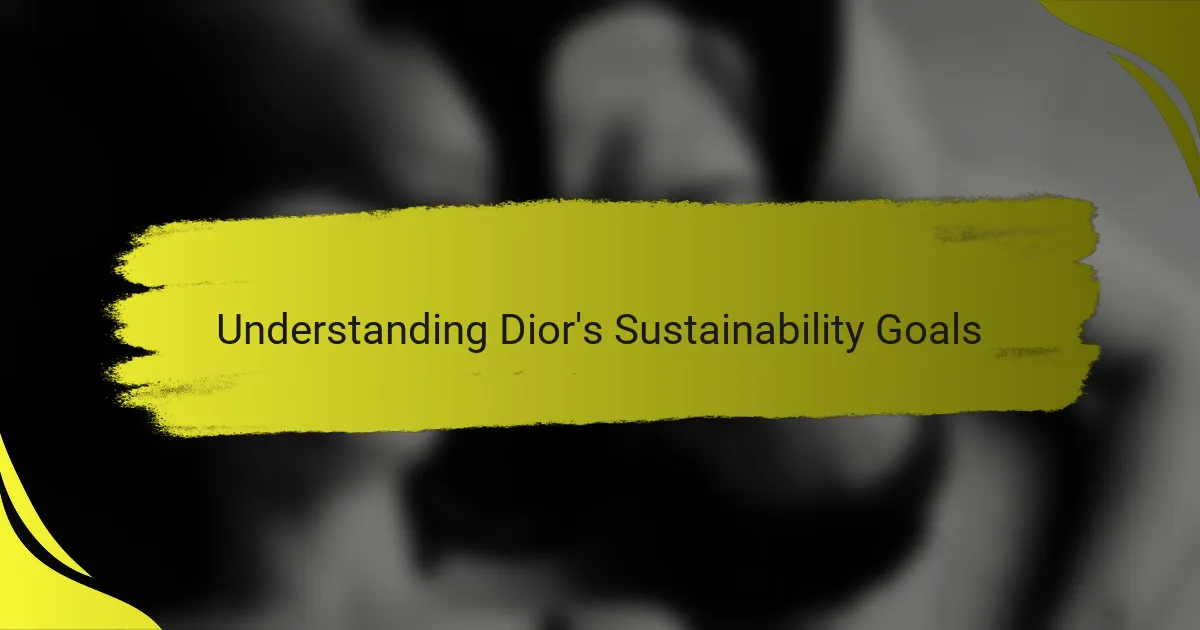
Understanding Dior’s Sustainability Goals
When I first delved into Dior’s sustainability goals, I was struck by how comprehensive and earnest their approach is. They aren’t just ticking boxes; they’ve committed to drastically reducing their carbon footprint through every part of their production process. Have you ever wondered how a luxury brand balances elegance with environmental responsibility? Dior’s answer lies in innovation combined with respect for the planet.
What really resonated with me was their focus on sourcing materials responsibly. It’s not just about using eco-friendly fabrics but ensuring that every supplier aligns with strict ethical standards. This level of dedication made me appreciate the journey behind each garment, turning fashion into a story of care rather than excess.
Dior’s transparent reporting on progress also caught my attention. By openly sharing their targets and achievements, they invite us to hold them accountable and join their mission. It made me think—sustainability isn’t just a trend for luxury brands, but a responsibility we should all embrace together.
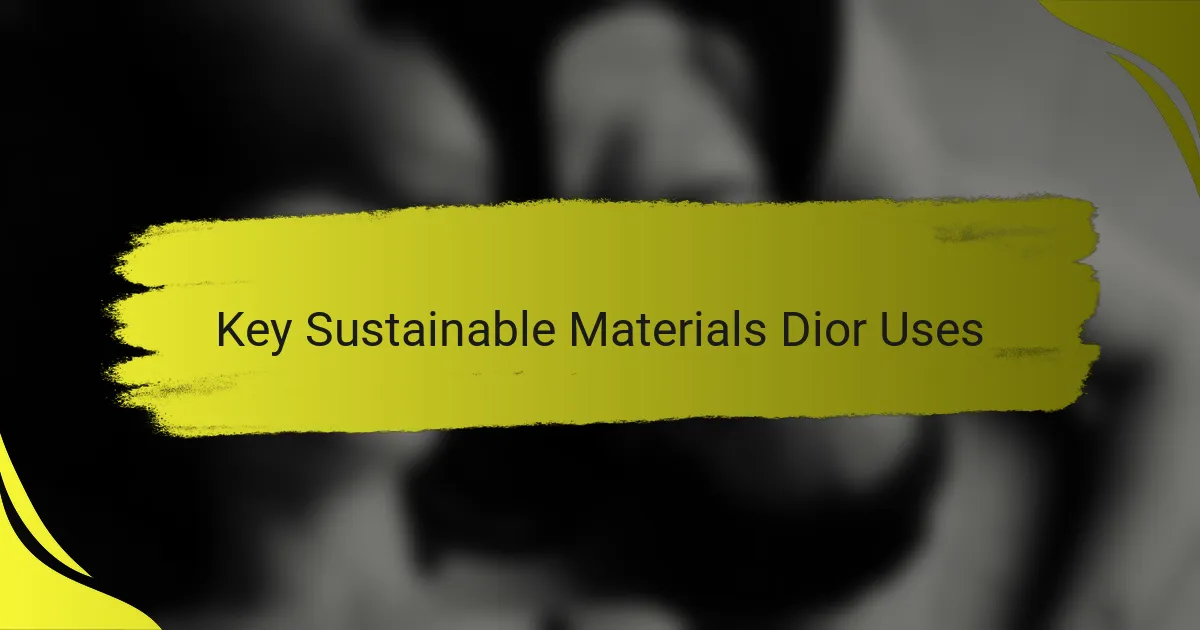
Key Sustainable Materials Dior Uses
One of the things that truly impressed me about Dior’s sustainability efforts is their use of organic cotton. Knowing that this fabric is grown without harmful pesticides makes me feel better about the clothes I choose. Have you ever stopped to think about how much cotton farming impacts the environment? Dior’s shift to organic cotton is a small but powerful step towards reducing that footprint.
Then there’s their embrace of recycled materials, like regenerated nylon. I find it fascinating how discarded fishing nets and plastic waste get a second life as luxurious fabrics. It made me realize sustainability isn’t about sacrificing style but about reimagining what materials can be. Doesn’t that change how you view the future of fashion?
Silk is another material Dior works with carefully. They partner with farms that practice responsible sericulture, making sure the production doesn’t harm ecosystems. When I learned this, it struck me how even the most delicate fabrics can have a strong sustainability story behind them. Isn’t it inspiring that elegance and eco-consciousness can truly go hand in hand?
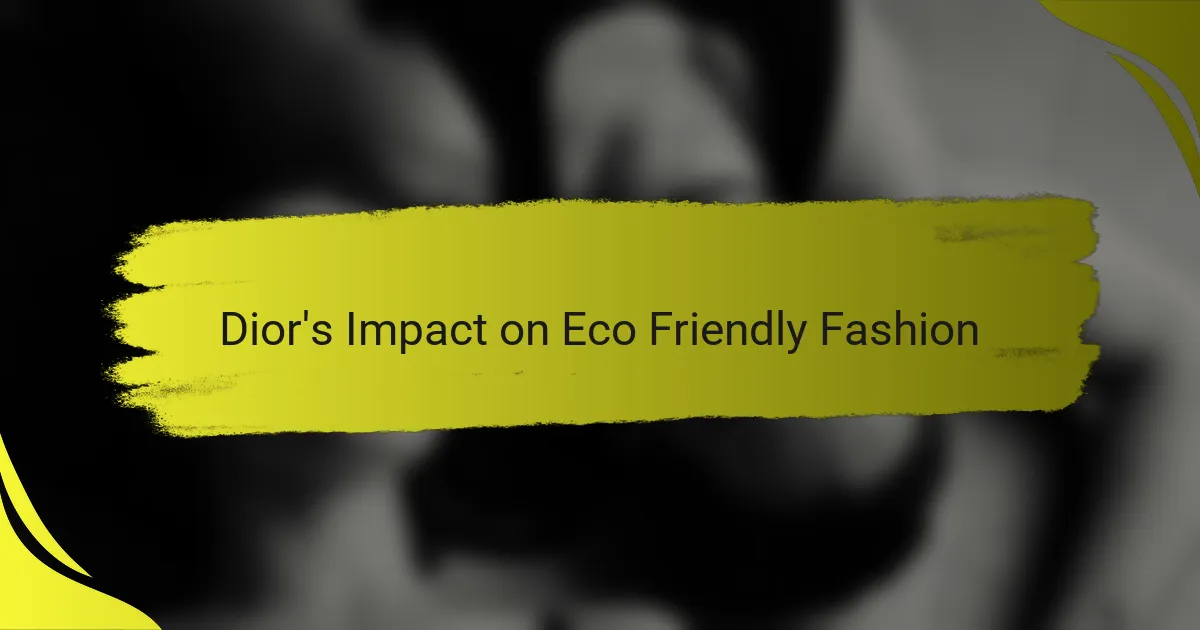
Dior’s Impact on Eco Friendly Fashion
When I first saw Dior championing eco-friendly fashion, it felt like a breath of fresh air in an industry often criticized for waste. Their impact goes beyond just ideas—they’re actively setting a new standard for luxury brands to think green. It made me wonder, could this be the turning point where high fashion truly embraces sustainability?
What stands out to me is how Dior’s influence encourages other designers to follow suit. When a giant like Dior commits to sustainability, it sends a powerful message that environmental care and style are not mutually exclusive. Have you noticed how their initiatives spark conversations across the fashion world, making eco-conscious choices more mainstream?
I also appreciate how Dior’s efforts give consumers, like me, a sense of hope. Choosing Dior now feels like supporting a brand that not only respects artistry but respects the planet too. Isn’t it motivating to know that your wardrobe can reflect your values without compromising on luxury?
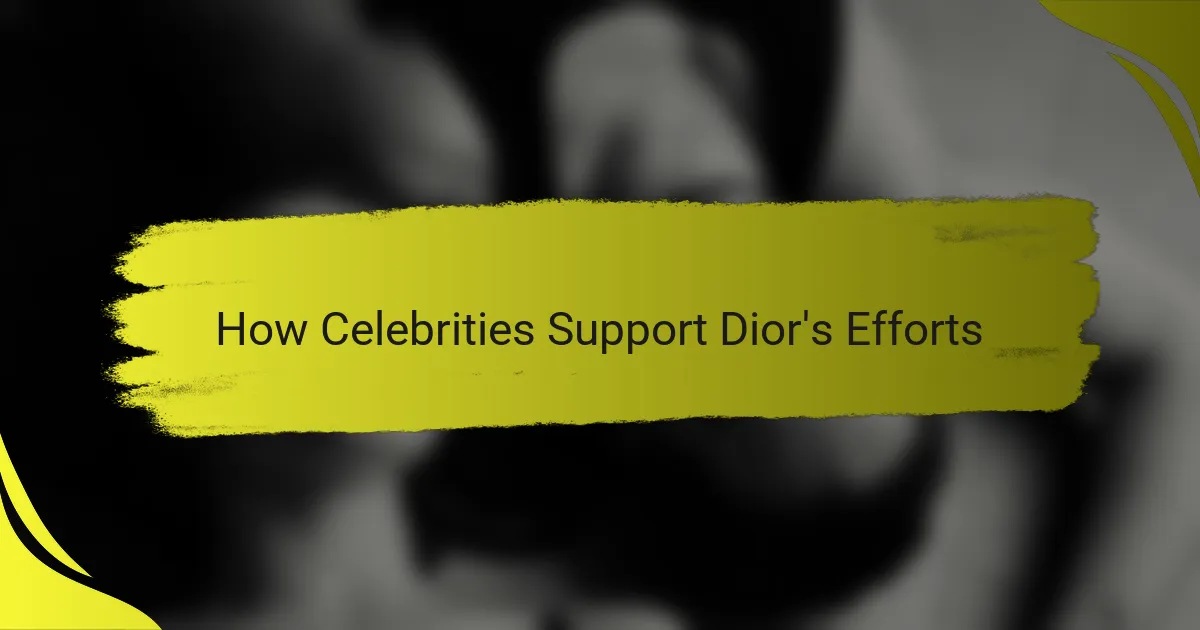
How Celebrities Support Dior’s Efforts
What really struck me about celebrities supporting Dior’s sustainability journey is their authentic enthusiasm. It’s not just about wearing the brand; many actively participate in campaigns or events that spotlight eco-conscious fashion. Have you ever seen a star confidently talk about the environment while dressed head-to-toe in luxury? That combination makes the message more powerful and relatable.
I remember reading about several celebrities choosing Dior’s sustainable collections for gala appearances, and it made me think about the influence they hold. Their choices on the red carpet ripple far beyond the event—fans notice, media highlights, and suddenly, sustainable fashion feels aspirational. Isn’t it amazing how one outfit can inspire thousands to consider eco-friendly options?
What fascinates me most is how some celebrities even collaborate directly with Dior on sustainability projects, lending their voice and creativity to drive real change. This isn’t just a marketing move; it’s a partnership rooted in shared values. When I see that level of commitment, it reminds me that sustainability in fashion can be bold, stylish, and impactful—all at once.
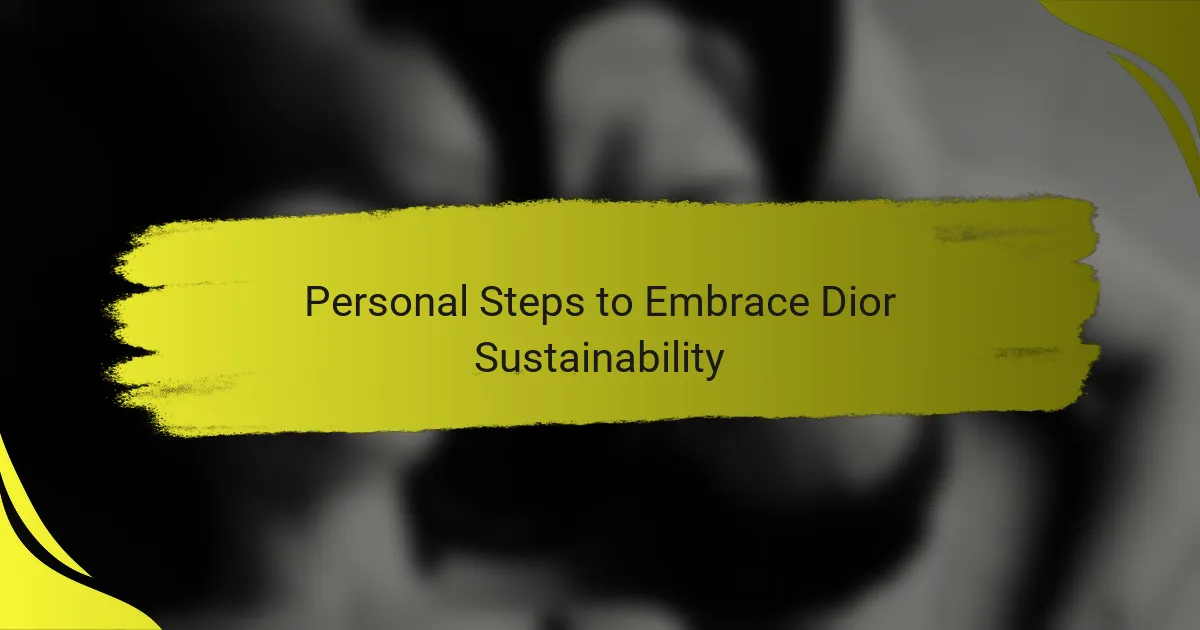
Personal Steps to Embrace Dior Sustainability
Embracing Dior’s sustainability efforts started with small but meaningful changes in how I shop. I began looking more closely at labels, asking myself if the materials were responsibly sourced, just like Dior does. Have you ever noticed how that shift in mindset transforms your appreciation for every piece you own?
Another step I took was to care for my clothes differently—treating them with gentleness to extend their lifespan instead of constantly chasing the latest trends. It felt empowering to see sustainability not just as a brand’s commitment but as a personal lifestyle choice that reflects my values.
I also made a point to share what I learned about Dior’s eco-friendly practices with friends and family. Talking about these efforts sparked conversations that made me realize how contagious passion for sustainability can be. Isn’t it amazing how one brand’s dedication can inspire so many others to rethink their habits?
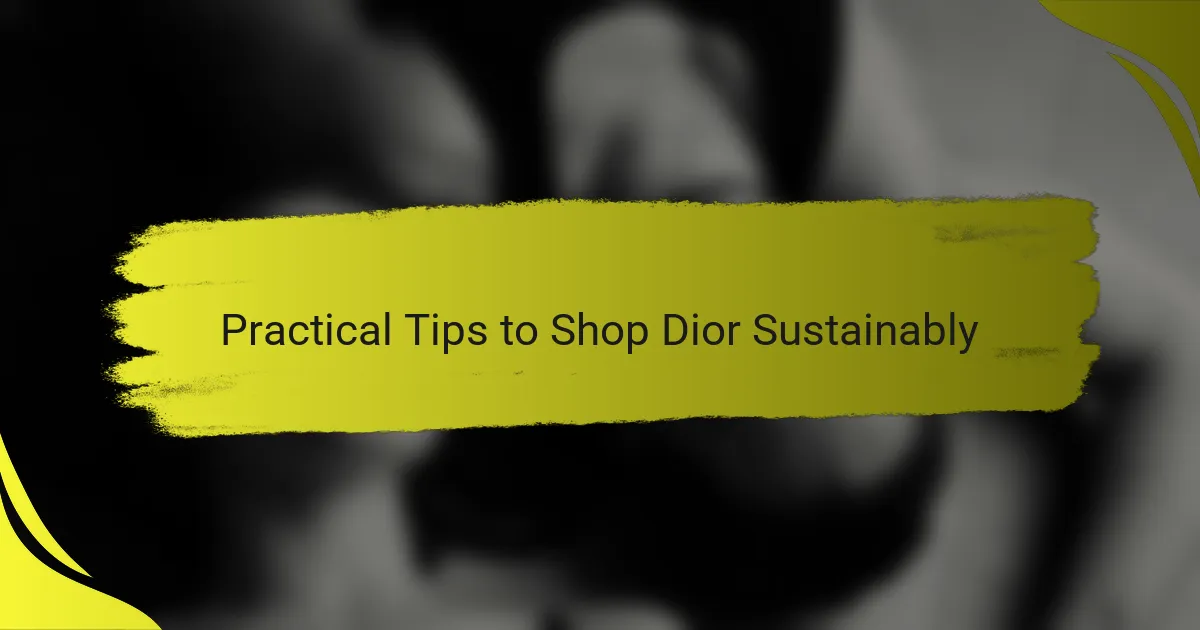
Practical Tips to Shop Dior Sustainably
One practical tip I found invaluable is to prioritize Dior’s pieces made from their sustainable materials, like organic cotton or regenerated nylon. When I chose a jacket crafted from recycled fabrics, it felt like more than a purchase—it felt like joining a meaningful story. Have you ever experienced that where an item becomes more than just fashion, but a statement of values?
I also learned to embrace preloved and vintage Dior items as part of sustainable shopping. There’s a unique joy in giving a second life to a timeless piece, and it aligns perfectly with Dior’s ethos of longevity and care. Plus, it made me ask myself: why not let history and sustainability coexist in my wardrobe?
Finally, taking time to maintain and repair Dior garments rather than discarding them reshaped how I view luxury. It taught me that true elegance lies in cherishing what we have. Don’t you think investing in thoughtful upkeep is one of the most personal ways to support sustainability?
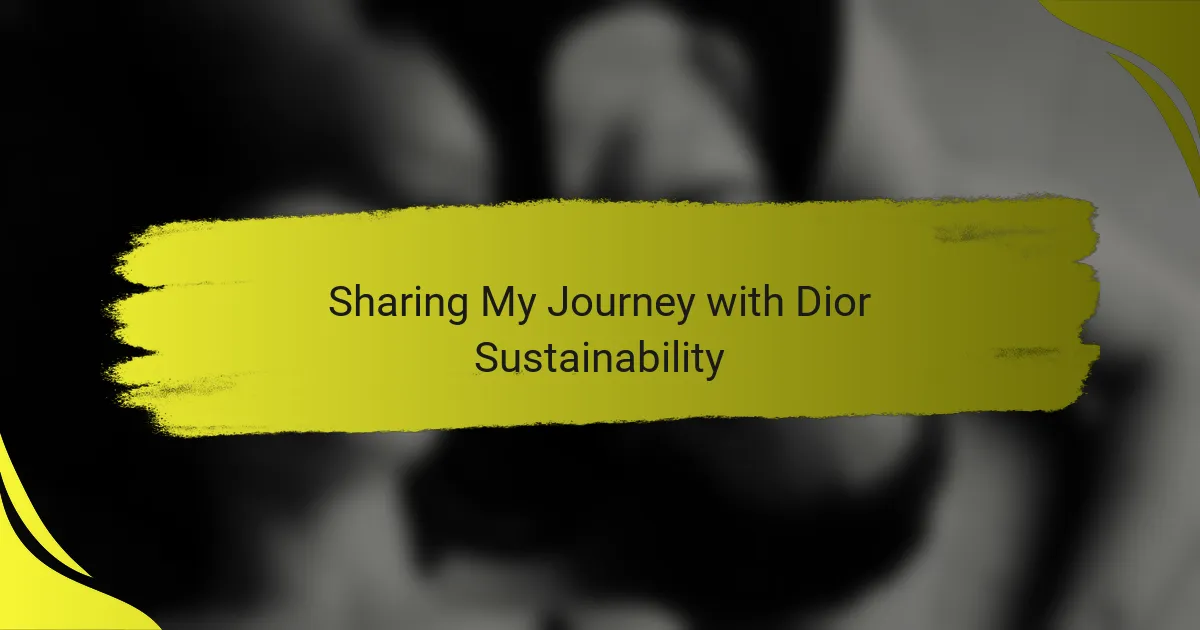
Sharing My Journey with Dior Sustainability
Sharing my journey with Dior’s sustainability efforts has been surprisingly transformative. As I learned more about their commitment, I found myself reflecting deeply on how my own fashion choices impact the planet. Have you ever felt that a brand’s values resonate so closely with your own that wearing their clothes becomes a statement beyond style?
What truly stands out to me is how this journey isn’t just about buying differently—it’s about adopting a mindset of care and responsibility. I remember the first time I chose a Dior piece made from recycled materials; it felt like a small but powerful way to align my passion for fashion with my desire to be more eco-conscious. That moment sparked a commitment I hadn’t anticipated, turning a simple purchase into a meaningful experience.
Sharing these insights with friends often leads to surprising conversations. I notice how enthusiasm for sustainability grows when you start opening up about what you’ve learned and why it matters. Isn’t it uplifting to see how one brand’s dedication can ripple outwards, inspiring a community to rethink what fashion can truly represent?
